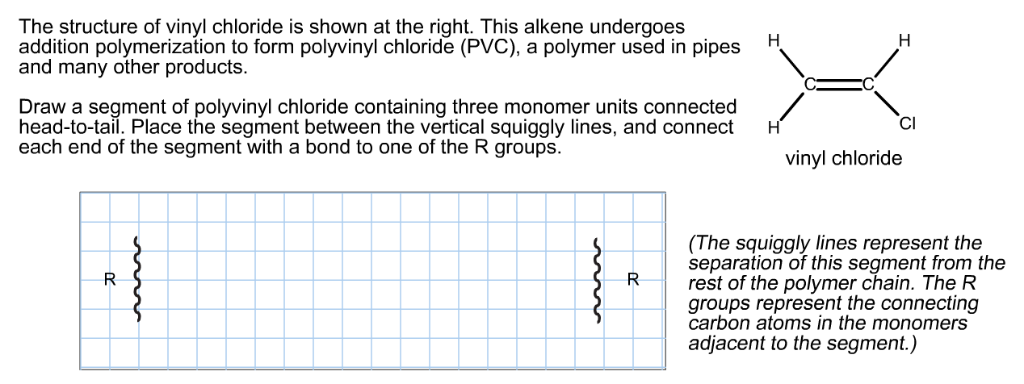About 13 billion kilograms are produced annually.
Vinyl chloride polymerisation.
Suspension polymerization of vinyl chloride in a stirred reactor 385.
Vinyl chloride is primarily used to make polyvinyl chloride to manufacture plastics.
This invention reveals a greatly improved redox initiator system for use in such polymerizations.
This polymerisation reaction proceeds by a free radical mechanism.
Micro suspension polymerization is a technique that it is widely used on a commercial basis for the polymerization of vinyl chloride monomer into polyvinyl chloride.
Suspension polymerization of vinyl chloride with mixed peroxides 387.
Vinyl chloride is an organochloride with the formula h 2 c chcl that is also called vinyl chloride monomer vcm or chloroethene this colorless compound is an important industrial chemical chiefly used to produce the polymer polyvinyl chloride pvc.
Additives are used to modify the properties of polyvinyl chloride to make it more useful.
Well duh it s similar to polyethylene but on every other carbon in the backbone chain one of the hydrogen atoms is replaced with a chlorine atom.
Vinyl chloride is an organohalogen compound that has important industrial applications.
Suspension polymerization of vinyl chloride with a mixture of a suspending agent and a surfactant 385.
The redox initiator systems of this invention are comprised of a a free radical generator such as a peroxide and b a reducing.
When treated with certain catalysts vinyl chloride monomers undergo polymerization and form the larger compound known as polyvinyl chloride or pvc.
Pvc ranks as the second most important polymer after ethylene.
Polyvinyl chloride is a white rigid quite brittle solid.
And here my friends is that monomer vinyl chloride.
Being a very well known memb r of the family of vinyl polymers.
Structurally pvc is a vinyl polymer.
It s produced by the free radical polymerization of vinyl chloride.
Rigid sometimes abbreviated as rpvc and flexible.
Pvc is the world s third most widely produced synthetic plastic polymer after polyethylene and polypropylene about 40 million tons of pvc are produced each year.
Vinyl chloride is a chlorinated hydrocarbon occurring as a colorless highly flammable gas with a mild sweet odor that may emit toxic fumes of carbon dioxide carbon monoxide hydrogen chloride and phosgene when heated to decomposition.
Pvc comes in two basic forms.
The m n of the polymers increased as a function of the reaction time and polymer yields although the initiator efficiency was low.
Polymerization of vinyl chloride vc with tert butyllithum tert buli was investigated from the point of controlled polymerization the polymerization of vc proceeded at 30 c to give high polymers.
Linear dependence of the m n of the polymer and polymer.
Polyvinyl chloride is produced in an addition polymerisation reaction using the chloroethene vinyl chloride monomer.

